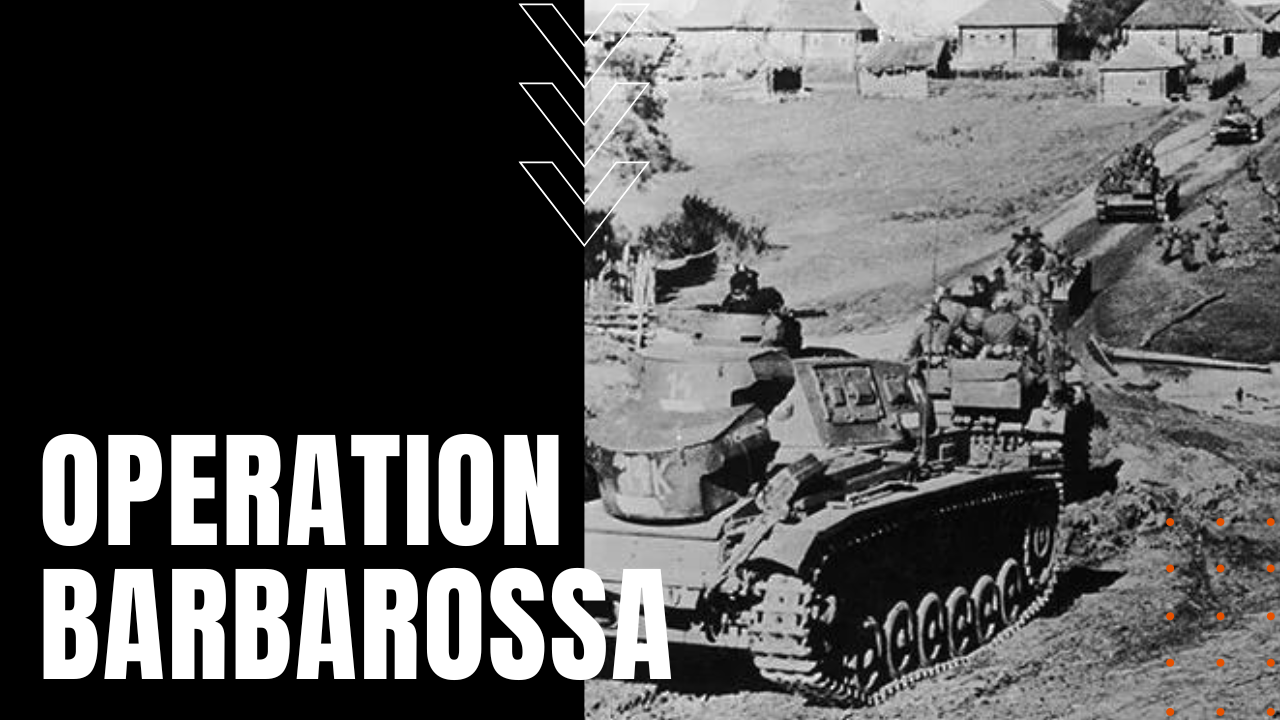Operation Barbarossa

After Germany signed a non-aggression pact with the Soviet Union in August of 1939—replete with secret plans to divide Czechoslovakia upon Germany’s planned invasion—on June 22nd, 1941, more than three million German and Axis troops invaded Russia along an 1,800-mile front, shooting down more than 1,000 Soviet aircraft on the first day alone. Codenamed Operation Barbarossa, Hitler’s plan called for the genocidal elimination of Russians and Ukrainians from their homelands, creating his envisioned lebensraum or “living space” for the future growth of his supposedly genetically superior German race.
Caught Flat-Footed
Despite the arrival across his borders of the most powerful invasion force in the history of human warfare—some 80 percent of all Wehrmacht assets—Stalin and his Red Army were caught flat-footed and unprepared, as Panzer tank divisions and Luftwaffe bombardments gave Germany an early lead against the Soviet’s numerous yet poorly-trained troops. Moving with the same Blitzkrieg speed that saw every European nation but Great Britain fall in less than six weeks time, advancing German forces were followed by SS death squads known as Einsatzgruppen, who sought out and killed Russian civilians, with a particular emphasis on Soviet Jews, while Hitler’s Commissar Order authorized the immediate execution of all Soviet prisoners of war, in direct violation of international war protocols like the Geneva Convention.
Heavy German Casualties
German forces also met with heavy casualties, as the Soviets numerical advantage and stiff civilian resistance took its toll on the Wehrmacht. Halting his attack on Moscow against protests from his generals, Hitler ordered his forces into resource-rich Ukraine, which fell to the Nazis by the end of September, 1941. After cutting Leningrad off from the rest of Russia, when his forces proved insufficient to take the city itself, Hitler ordered a siege of starvation, which would last for some 872 days.
Early Failure for the Nazis
Launching a second offensive against Moscow in early October of 1941, Hitler’s delay gave the Soviets time to strengthen the city’s defenses, while the winter quagmire season known as Rasputitsa halted German forces 12 miles from the city, before Red Army reinforcements from Siberia forced the Germans into a full-scale retreat. Considered one of the greatest early failures of Hitler’s aggression in Europe, his reliance on a quick victory collapsed under inadequate supply lines, frigid weather and harsh terrain, making Operation Barbarossa, an early fail for Nazi Germany.
